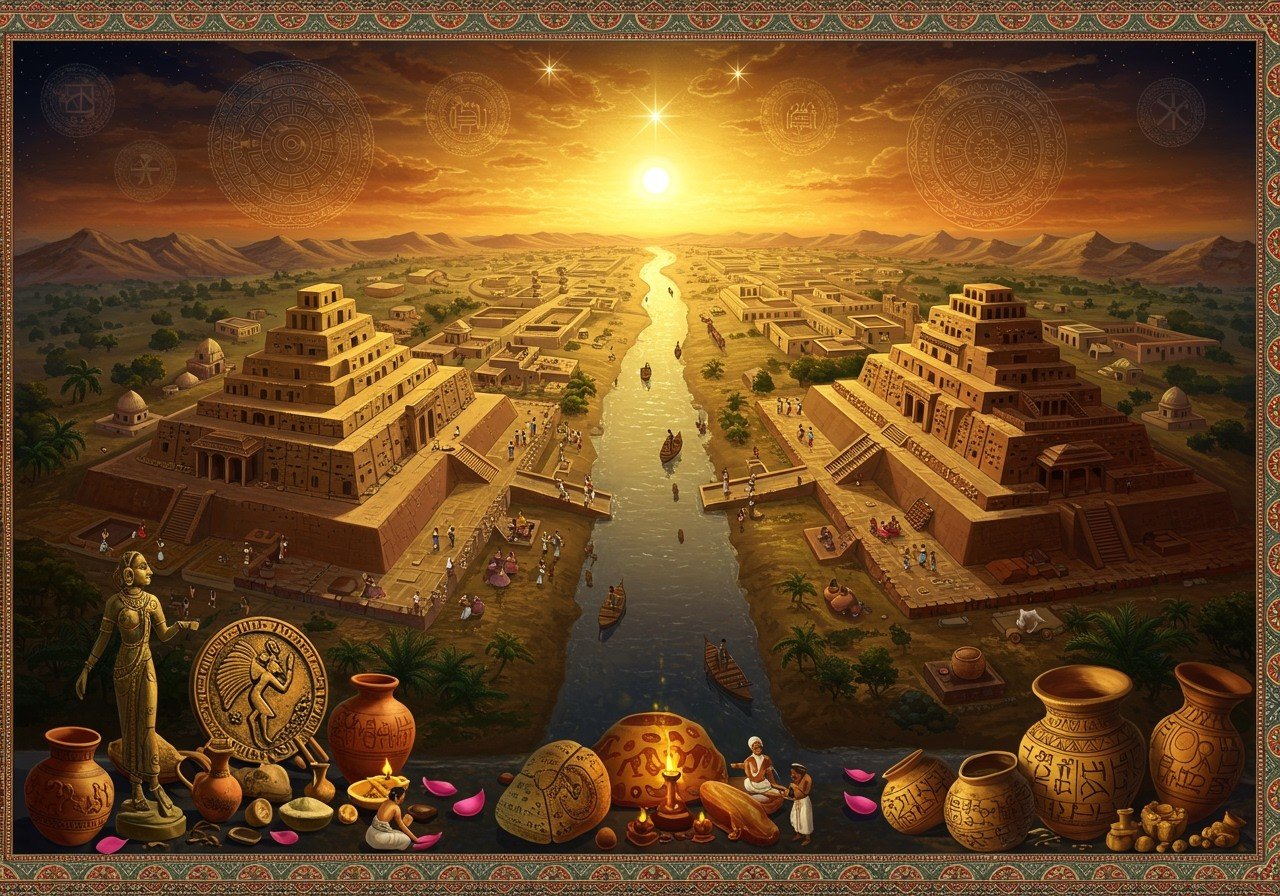
The Indus Valley Civilization, one of the world’s oldest urban cultures, thrived around 2500 BCE in present-day Pakistan and northwest India. Among its most significant sites are Harappa and Mohenjo-daro, offering remarkable insights into ancient urban planning, social organization, and daily life. This article delves into the significance of these sites, their historical context, and enduring legacy.
Historical Context of the Indus Valley Civilization
The Indus Valley Civilization flourished between 2600 BCE and 1900 BCE. Harappa’s discovery in 1826 by Charles Masson, followed by R.D. Banerji’s unearthing of Mohenjo-daro in 1922, are pivotal moments in understanding early South Asian urban culture. This civilization boasted an advanced writing system, extensive trade networks, and impressive technological innovations.
Location and Discovery
Harappa is located in Punjab, Pakistan, while Mohenjo-daro is in Sindh, Pakistan. These sites, unearthed in the early 20th century by archaeologists like Sir John Marshall and Mortimer Wheeler, revolutionized our understanding of ancient civilizations. Despite facing excavation challenges, their efforts unveiled these ancient cities.
Urban Planning and Architecture
Harappa and Mohenjo-daro exhibited sophisticated urban planning, evident in their grid-based city layouts. Mohenjo-daro’s Great Bath exemplifies ancient public waterworks. Their advanced drainage and sewage systems were unparalleled in contemporary civilizations. The use of standardized fired bricks in construction showcases their technological prowess.
Social and Economic Life
The Indus Valley Civilization possessed a complex social structure, with evidence of social stratification seen in distinct residential areas. Standardized weights, measures, and trade seals highlight the importance of commerce. Agriculture and domesticated animals formed the backbone of their economy, complemented by crafts like bead-making, metallurgy, and pottery.
Language and Script
The Indus script remains undeciphered, though inscribed seals suggest its use in trade and administration. Theories about its language family include Dravidian or Proto-Dravidian origins. Deciphering this script could unlock a deeper understanding of their political and social structures.
Religion and Beliefs
Archaeological findings offer glimpses into the religious practices of the Indus people. The Great Bath may have served ritual bathing purposes. Depictions on seals suggest animal worship. Terracotta figurines hint at the reverence for a mother goddess. Unlike other ancient cultures, monumental religious structures are absent.
Legacy and Significance
The Indus Valley Civilization’s legacy profoundly influences South Asian history and culture. Their urban planning and architectural techniques, especially the grid layouts of Harappa and Mohenjo-daro, set precedents for future urban development. These sites hold immense significance in the nationalist narratives of both India and Pakistan, symbolizing a shared heritage and a rich cultural past.
The civilization’s advanced drainage and sewage systems offer valuable lessons for modern urban planning and sustainability. Their religious practices, inferred from archaeological evidence, provide insights into their spiritual lives, emphasizing cleanliness, a connection with nature, and reverence for fertility.
How Poojn.in Connects You to Ancient Indian Heritage
While exploring the wonders of Harappa and Mohenjo-daro, connect with India’s ancient traditions through authentic ritual items from Poojn.in. As India’s leading Dashakarma bhandar, we help you maintain a spiritual link to our ancient civilization:
- Pure Copper Items: Echoing the copper artifacts of the Indus Valley, we offer genuine copper vessels and items for sacred rituals, ensuring purity and authenticity, much like the craftsmanship of the past.
- Traditional Clay Pots: Reflecting Harappa’s pottery traditions, our clay items cater to various religious ceremonies, connecting you to the ancient practices through tangible objects.
- Sacred Ritual Kits: Our complete pooja samagri sets preserve traditional worship methods, offering a convenient and authentic way to perform rituals.
- Authentic Herbs and Materials: We provide responsibly sourced pure ingredients, maintaining the authenticity of ancient practices, ensuring the integrity of your rituals.
Visit Poojn.in to discover traditional ritual items that connect you with India’s rich spiritual heritage. Our products are verified for purity and come with expert guidance on their ritual use.
FAQs on Harappa and Mohenjo-daro
Where are Harappa and Mohenjo-daro situated? Harappa is in Punjab, Pakistan, and Mohenjo-daro is in Sindh, Pakistan.
What are Harappa and Mohenjo-daro? They are ancient cities belonging to the Indus Valley Civilization, showcasing advanced urban planning and architecture.
Why are they significant? They offer insights into early urban life, social organization, and technological advancements in ancient South Asia.
What artifacts have been discovered? Pottery, tools, seals, and sculptures reveal details about daily life, trade, and culture.
How old are these cities? They date back to approximately 2600 BCE, making them over 4,500 years old.
What were their main features? Well-planned streets, sophisticated drainage systems, granaries, and baths are notable features.
Were they the only cities in the civilization? No, other cities like Dholavira and Lothal existed within the Indus Valley Civilization.
How were they discovered? Archaeological excavations in the 1920s brought these cities to light, revealing the significance of the civilization.
Explore related articles on Nira River, Shri Swaminarayan Mandir Mumbai, Varanasi’s Leaning Temples, and Lord Shiva and Krishna Stories and Bhajans.
Find authentic products for your spiritual practices on Poojn.in, such as Bel Malas, Tulsi Malas, Shiva Lingams, and Adiyogi Murtis.


